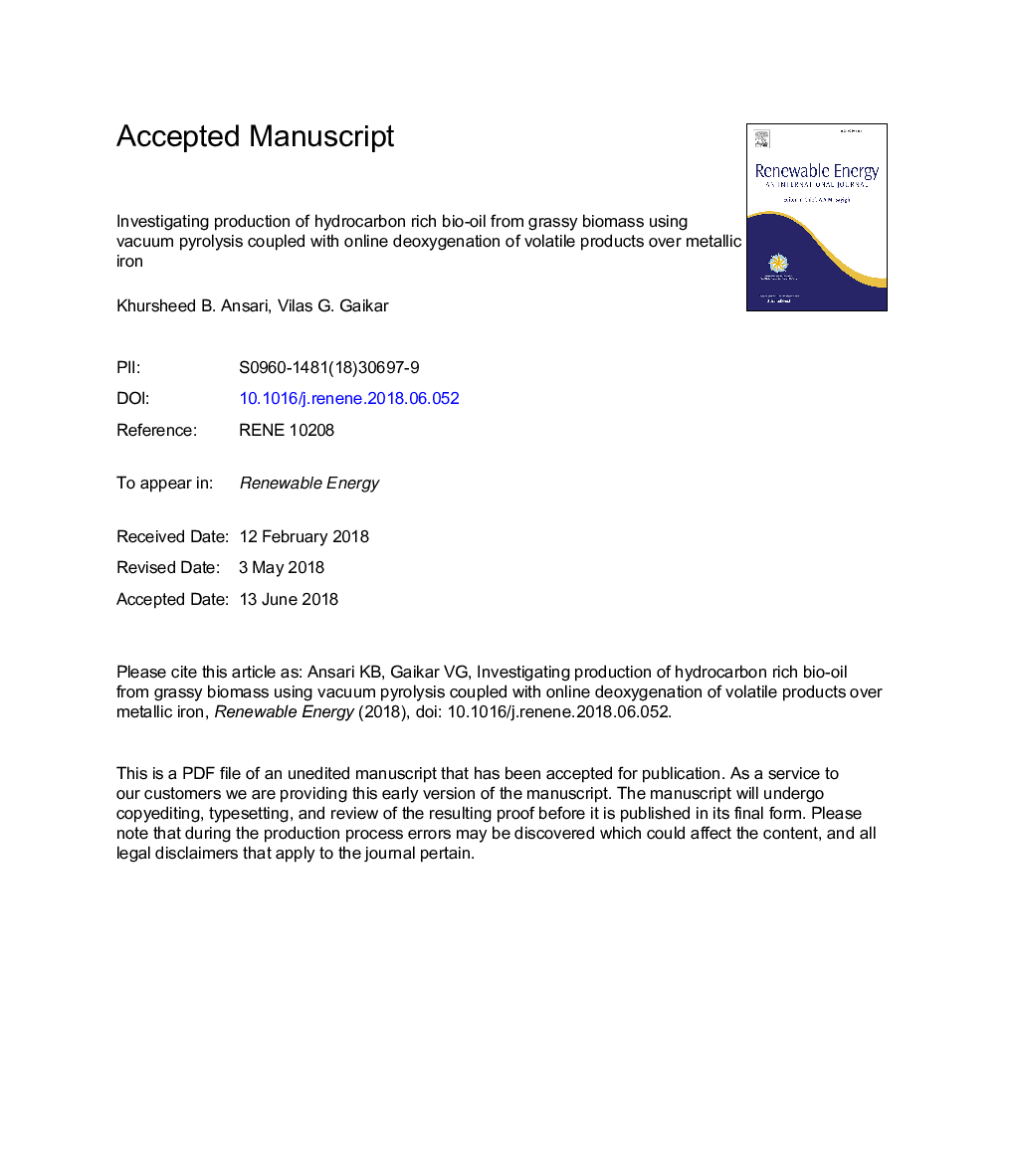| Article ID | Journal | Published Year | Pages | File Type |
|---|---|---|---|---|
| 6763761 | Renewable Energy | 2019 | 37 Pages |
Abstract
Pyrolysis of biomass converts it to bio-oil, which contains high oxygen content, reactive nature, and poor heating value and hence require upgradation prior to its utilization as fuel. It is desirable to convert the oxygenated compounds of bio-oil into oxygen deficient compounds in the context of converting biomass to biofuel. In this work, we show the generation of hydrocarbon-rich bio-oil from grassy biomass (taking Napier grass as a model compound) using vacuum pyrolysis coupled with online upgradation (or deoxygenation) of volatile products over an iron bed. A comparison between individual pyrolysis products, especially liquid compounds, without and with vapor upgradation treatment, is presented. Online deoxygenation of pyrolysis volatile products over iron bed significantly reduced oxygenated compounds within bio-oil and increased the formation of hydrocarbons. Pyrolysis gases after deoxygenation treatment predominantly contained hydrogen along with C1 - C4 hydrocarbons, carbon dioxide, and carbon monoxide. Amongst liquid products, bio-oil mainly contained C9 - C23 hydrocarbons, phenols, and aldehydes, while, aqueous phase contained dissolved organics as alcohol, acid, aldehyde, phenolic compounds, and sugar chemicals. Additionally, the amorphous and alkaline biochar comprised of nanoparticles, having the porous surface and various functionalities suitable for acidic soil. Moreover, a reaction scheme for Napier grass-derived products is proposed.
Related Topics
Physical Sciences and Engineering
Energy
Renewable Energy, Sustainability and the Environment
Authors
Khursheed B. Ansari, Vilas G. Gaikar,
